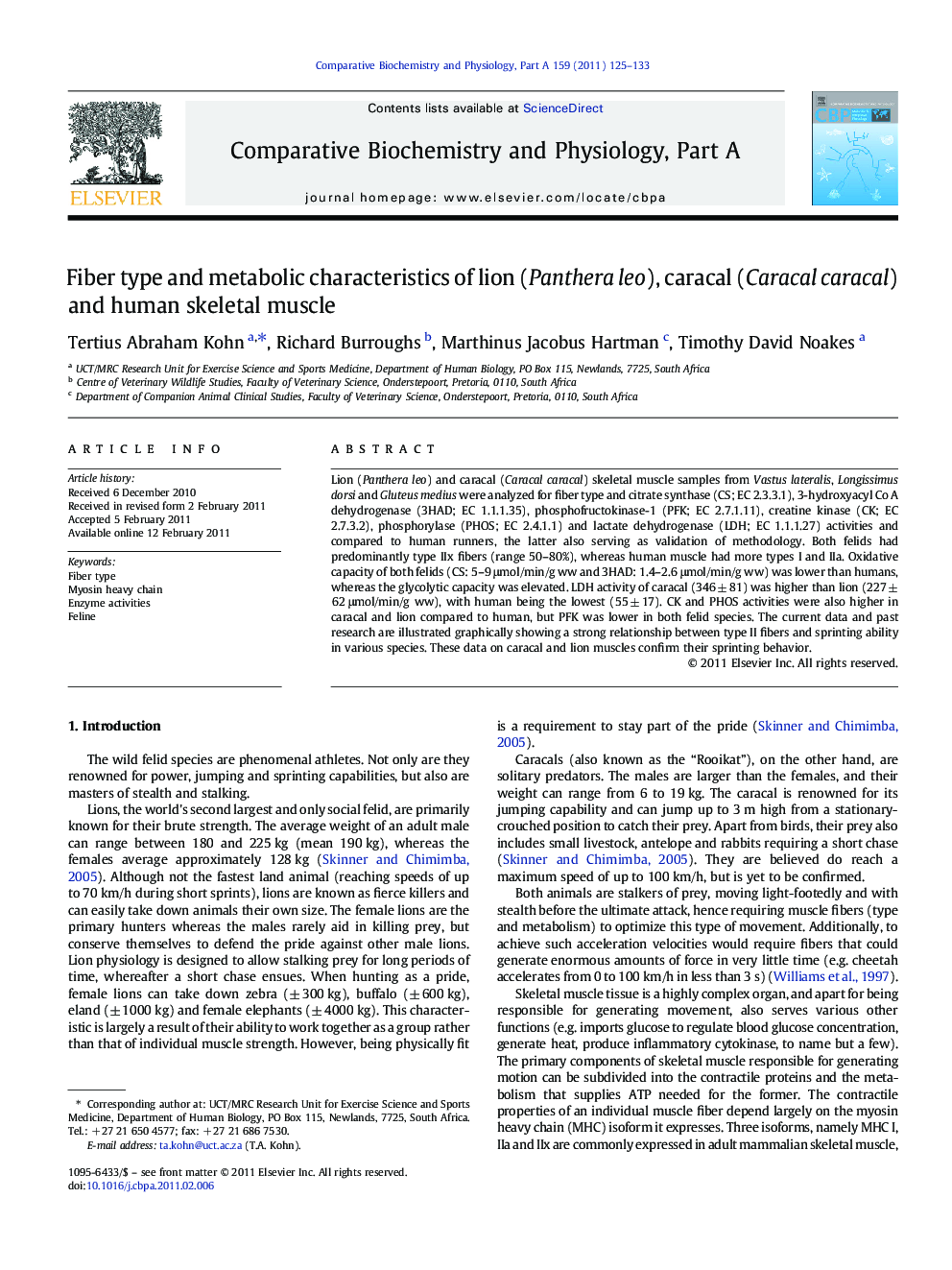| Article ID | Journal | Published Year | Pages | File Type |
|---|---|---|---|---|
| 1972819 | Comparative Biochemistry and Physiology Part A: Molecular & Integrative Physiology | 2011 | 9 Pages |
Lion (Panthera leo) and caracal (Caracal caracal) skeletal muscle samples from Vastus lateralis, Longissimus dorsi and Gluteus medius were analyzed for fiber type and citrate synthase (CS; EC 2.3.3.1), 3-hydroxyacyl Co A dehydrogenase (3HAD; EC 1.1.1.35), phosphofructokinase-1 (PFK; EC 2.7.1.11), creatine kinase (CK; EC 2.7.3.2), phosphorylase (PHOS; EC 2.4.1.1) and lactate dehydrogenase (LDH; EC 1.1.1.27) activities and compared to human runners, the latter also serving as validation of methodology. Both felids had predominantly type IIx fibers (range 50–80%), whereas human muscle had more types I and IIa. Oxidative capacity of both felids (CS: 5–9 μmol/min/g ww and 3HAD: 1.4–2.6 μmol/min/g ww) was lower than humans, whereas the glycolytic capacity was elevated. LDH activity of caracal (346 ± 81) was higher than lion (227 ± 62 μmol/min/g ww), with human being the lowest (55 ± 17). CK and PHOS activities were also higher in caracal and lion compared to human, but PFK was lower in both felid species. The current data and past research are illustrated graphically showing a strong relationship between type II fibers and sprinting ability in various species. These data on caracal and lion muscles confirm their sprinting behavior.
